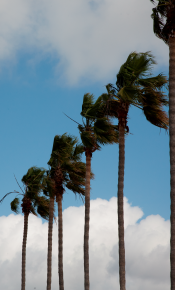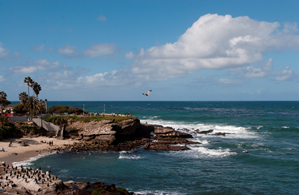| SAND Home | |
| SAND I (2004) | |
| SAND II (2005) | |
| SAND III (2006) | |
| SAND IV (2007) | |
| SAND V (2008) | |
| SAND VI (2009) | |
| SAND VII (2010) | |
| SAND VIII (2011) | |
| SAND IX (2012) | |
| SAND X (2013) | |
| SAND XI (2014) | |
| SAND XII (2015) |
PRINCIPLES OF AUTONOMOUS NEURODYNAMICS 2012
San Diego, California
August 22-24, 2012
|
|

|
A multi-disciplinary meeting exploring free dynamics in networks and the relation of neurodynamics to neurological conditions and autonomous activity.
The 9th annual meeting of the Society for Autonomous Neurodynamics (SAND) will take place on August 22th, 23rd and 24th, 2012 in San Diego, California at the Green Neuroscience Laboratory, Neurolinx Research Institute. We are soliciting participants from a range of fields interested in Autonomous Neurodynamics. If you would like to present work relating to these topics at SAND please send in a 250-word abstract by Friday, August 3rd, 2012.
Register online at:
http://www.utoronto.ca/sand/PAND2012/register.html
Abstracts can also be emailed to: conference.sand@utoronto.ca
Presentations should be 15 minutes in length. We encourage entries from a diversity of backgrounds and welcome both exploratory and advanced research. Sessions are meant to be fun, dynamic and will include open discussions.
PAGE CONTENTS:
SAND Conference Scope
Dates
Accommodations
San Diego, La Jolla and Baja Activities
Accessibility and Child Care
Conference Topics
Organizing and Scientific Committee
Meeting Sponsors
Why Autonomous Neural Systems?
Why Autonomous Neurodynamics and Neurological Conditions?
Meeting Background
Autonomous Neurodynamics describes interactive systems that can change activity both in response to and independently of the environment. Presentations will focus on the theoretical underpinnings and implications of autonomous dynamics in relation to neural activity, cognition, social systems and general network dynamics. Sessions may encompass a broad array of approaches including presentations from mathematics, physics, philosophy, psychology, social studies, legal theory, computational and theoretical neurosciences.
Presentations and roundtable: Wednesday, August 22 - Friday, August 24, 2012
Post-presentation activities: Friday, August 24 - Sunday, August 26, 2012
Recommended latest arrival: Tuesday, August 21, 2012
Recommended earliest departure, presentations portion only: Saturday, August 25, 2012
Recommended earliest departure, Baja SAND and Sea Expedition participants: Monday, August 27, 2012
Click here for additional information on accommodations.
SAN DIEGO, LA JOLLA AND BAJA ACTIVITIES
The conference will take place in San Diego and La Jolla, California. Well known for its sunny climate, sandy beaches, and laid-back air the area also houses energetic communities of innovators, original thinkers and creative researchers. As in previous years, the conference presentations will be followed by an outdoor adventure in which ideas are exchanged and collaborations planned in a more informal, free and dynamic environment. This year's post-presentation event will take us into Mexico for a "SAND and Sea Baja Excursion", down the coast of Baja California to Ensenada with opportunities for hiking, diving, surfing, yoga and meditation. Limited spots. |

|
All presentations will take place in accessible venues. Limited grants to assist with child care arrangements may be available. Please indicate any requirements during online registration.
SAND conference presentations typically encompass a wide range of themes that have included:
Physiology, Sensorimotor Systems & Behavior Neuroanatomy Neurogenetics & Pathobiology Biochemistry, Pharmacology & Nutrition Hormones & Reproduction Neurology and Clinical Perspectives Attention, Sleep & Addiction Social Sciences & Social Work Neuropsychoanalysis Embodied Modeling / Autonomous Agents Dynamical Systems / Nonlinear Analysis Cognitive Science & Cognitive Neuroscience Personal & Community Narratives Gender & Cultural Studies Network Theory Computation & Information Theory Philosophy of Mind / Epistemology / Metaphysics The Role of Noise / Stochasticity / Randomness In addition to these topics we welcome novel approaches and interdisciplinary research that can synthesize findings from various fields. Presentations may also consider the implications of research findings on ethical theory, autonomy and health. This year, the meeting will be hosted by the Green Neuroscience Laboratory and we particularly encourage discussion of the environmental, theoretical, social and scientific factors that restrict and enable sustainable autonomy. We also encourage presentations that examine changes in neurodynamics in neurological conditions such as epilepsy, Parkinson's, and Alzheimer's that can have a tremendous impact on an individual's autonomy and quality of life. Investigations may also include more common conditions in which changes in neural dynamics impact volitional activity such as sleep. Presentations may be considered for inclusion in a special post-conference publication.
ORGANIZING AND SCIENTIFIC COMMITTEE:
- Ann Lam, The Green Neuroscience Laboratory, Neurolinx Research Institute, USA (CHAIR)
- Jay Coggan, Salk Institute & Neurolinx Research Institute, USA (CO-CHAIR)
- Ping Wang, Salk Institute, USA (CO-CHAIR)
- Peter Carlen, University of Toronto, Toronto Western Research Institute, Canada
- Hailey Chu, The Green Neuroscience Laboratory & San Diego Mesa College
- Marija Cotic, University of Toronto, Canada
- Laura Frutos, The Green Neuroscience Laboratory & San Diego State University
- Melanie Jeffrey, University of Toronto Epilepsy Research Program, University of Toronto, Canada
- Stiliyan Kalitzin, Dutch Epilepsy Clinics Foundation (SEIN), The Netherlands
- Alisa Munoz, Green Neuroscience Laboratory & San Diego Mesa College
- Elan Liss Ohayon, University of California San Diego & Salk Institute, USA
- Gee Yeoun Ryu, The Green Neuroscience Laboratory & San Diego Mesa College
- Piotr Suffczynski, Warsaw University, Poland
- The Green Neuroscience Laboratory, Neurolinx Research Institute
- The University of Toronto Epilepsy Research Program (UTERP)
- Stichting Epilepsie Instellingen Nederland (SEIN)
- Institute of Experimental Physics, Warsaw University
- North American Taiwanese Professors' Association, Southern California
WHY AUTONOMOUS NEURAL SYSTEMS?
Clearly neural systems can perform incredibly complex computations but what are the features that underlie their autonomy? How do healthy embodied brains remain independent from the dynamics of the world while also being responsive? How do neural networks find balance yet avoid infinite repetition or silence?
Emerging techniques in complexity sciences and neural modeling provide the tools to explore dynamics in such systems but have yet to explain how daily computational tasks are accomplished in a continuous and autonomous fashion. These questions regarding system autonomy are often independently explored in physics, mathematics, philosophy and other fields. The issue of increasing freedom in systems is at the foundations of cognitive and social sciences.
WHY AUTONOMOUS NEURODYNAMICS AND NEUROLOGICAL CONDITIONS?
The most devastating aspect of a neurological condition is often the impact on independent activity. For example, in epilepsy the changes in neurodynamics result in an acute and often devastating loss of freedom, in which an individual's autonomy is lost and regained in very sudden and dramatic ways. The generally unpredictable nature of this transition to a state of partial or total functional neuronal impairment makes epilepsy more a dynamical system condition than a product of any single factor. Why and how does the transition occur and why and how does the epileptic state terminate? Are these transitional states a by-product of a complex neuronal system meant for autonomous operation in changing environments? Do these transitions hint at fundamental neuronal mechanisms? At the other extreme, aging is an example of a process in which changes to neurodynamics come about very gradually but can be no less devastating.
Neuroscience researchers are often focused on controlling phenomena, forgetting that an important goal is to increase individual autonomy. There are many routes to changing neural dynamics, the difficulty is ensuring that as a consequence the individual becomes more autonomous rather than less so. What can theories of autonomous systems tell us about treating these conditions? What can these conditions tell us about how complex systems maintain freedom in the environment?
The first meeting of the Society for Autonomous Neurodynamics was held at the University of Toronto, in August 2004. Subsequent meetings took place at the Institute of Experimental Physics, Warsaw University (2005), the Marine Biology Station, Eilat (2006), Laval University, Quebec (2007), SEIN in the Netherlands (2008), the University of California San Diego (UCSD) & the Salk Institute for Biological Studies in La Jolla, California (2009) and the University of Toronto (2010). In 2011 SAND held its first meeting in Asia at the Bangkok General Hospital and Srinakharinwirot University in Thailand.
The meetings have included empirical scientists, theoreticians and personal reports. They have proven to be cognitively intense, high-energy, autonomous events in a fun and informal atmosphere. The gatherings also mark the continuation of an international collaboration on the subject between researchers in the Netherlands, USA and Canada including the Dutch Epilepsy Clinics Foundation (SEIN), the University of Amsterdam, the Salk and the University of Toronto Epilepsy Program.
Last modified: Thursday July 12, 2012
Society for Autonomous NeuroDynamics (SAND) Home Page
University of Toronto Home Page